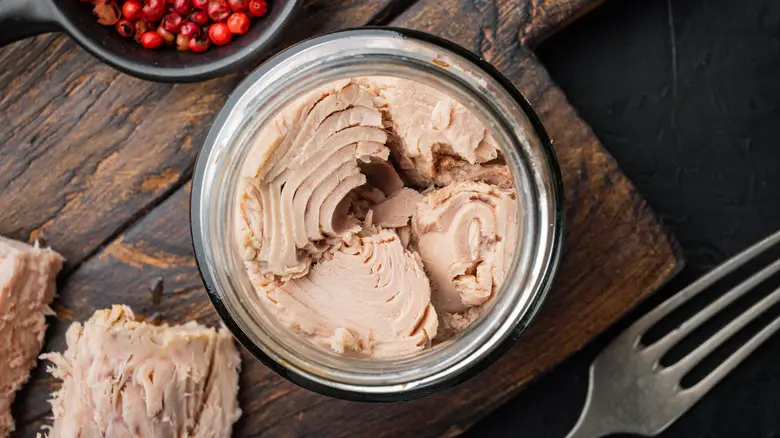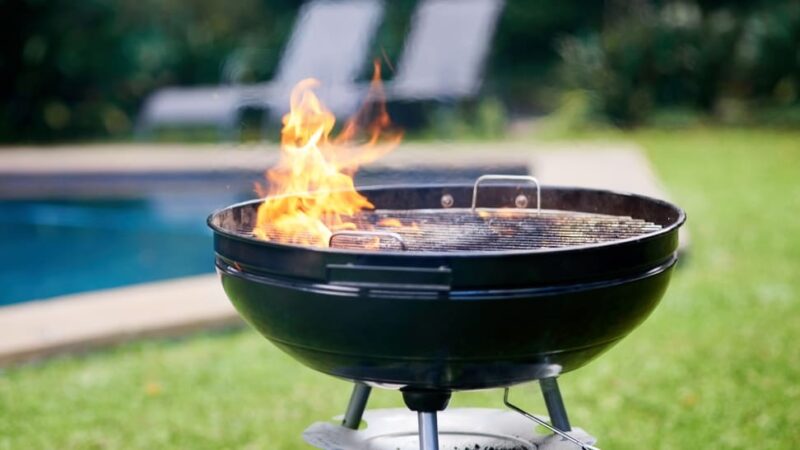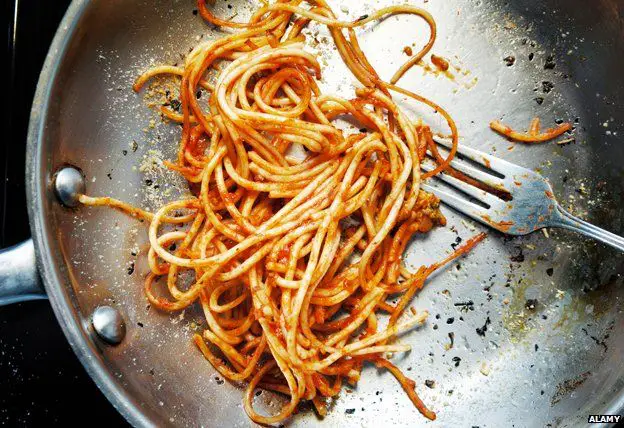Should I Boil the Can of Tuna?
Boiling a can of tuna is one of the ways to prepare this popular protein-packed fish that’s available in most grocery stores. While some people find it easier to shred canned tuna after it’s been boiled, others argue that it may pose health risks due to the potential for metal leaching from the can. In this article, we’ll take a closer look at whether you should boil your cans of tuna or not, considering the benefits and risks involved.
Understanding Tuna and Its Cans
Tuna is a type of saltwater fish that comes in different varieties such as albacore, yellowfin, and skipjack. It’s typically high in protein, low in fat, and contains essential nutrients such as omega-3 fatty acids. When canned, tuna is a convenient and affordable source of protein that many people incorporate into their meals daily.
Canned tuna usually contains cooked and flaked fish, oil or water, salt or brine, and sometimes flavor enhancers like spices or herbs. It has a long shelf life due to its preservation methods – heat processing, vacuum sealing, and sometimes addition of preservatives – making it an ideal pantry staple for many households.
Benefits of Canned Tuna:
- Convenient and easy to store
- Affordable compared to fresh tuna
- Packed with high-quality protein
- Contains healthy fats like omega-3s
- Versatile ingredient for salads, sandwiches, wraps, pasta dishes, etc.
Boiling Cans of Tuna: Benefits and Risks
Boiling canned tuna makes it easier to shred the meat for dishes like tuna salad or casseroles. The heat from boiling softens the fish making it more malleable and easier to break apart with a fork or spoon. However, there are potential risks involved in boiling canned tuna that need to be considered.
Beware of Metal Leaching from the Can:
A risk associated with boiled canned tuna is the potential for metal leaching from the can into the food. Tuna cans are typically made of steel coated with tin or aluminum to prevent rust or corrosion. However, these coatings may break down when exposed to heat, especially if the can has any dents or scratches. As a result, harmful chemicals like lead, cadmium, or bisphenol-A (BPA) can leach into the food. Consumption of these substances over time has been linked to a range of negative health outcomes such as kidney disease, reproductive problems, and cancer.
Health Risks Involved in Consuming Boiled Canned Tuna Regularly
Aside from metal leaching concerns, there are also health risks associated with consuming too much canned tuna regularly. Tuna is known to contain high levels of mercury – a toxic metal that’s harmful to human health even in small doses. Mercury can accumulate in our bodies over time and cause serious neurological effects such as memory loss, tremors, and developmental delays in young children.
The United States Environmental Protection Agency (EPA) and Food and Drug Administration (FDA) have guidelines on how much canned tuna is safe for consumption per week based on an individual’s body weight.
Factors to Consider before Boiling Cans of Tuna
Before deciding whether to boil your cans of tuna or not, there are some crucial factors you need to consider:
Canning Process of Tuna:
Not all canned tuna is created equal. Some brands may have higher quality control standards when it comes to food production and packaging while others may cut corners to save costs. It’s essential to purchase canned tuna from reputable companies that prioritize the health and safety of consumers. Look for tuna that’s labeled as “pole-and-line” caught, which means it’s sustainably sourced and minimizes bycatch of other marine life.
Type of Can Used in Packaging Tuna:
As mentioned earlier, the can itself plays a significant role in ensuring food safety when boiling canned tuna. Choose cans that are undamaged, without dents or scratches, and those with intact seals. Avoid cans that appear rusted or bloated.
The Duration Needed to Boil a Can of Tuna:
The longer you boil canned tuna, the higher the risk of metal leaching. However, boiling canned tuna for a short period may not achieve the desired level of doneness. Therefore, you need to find a balance between the right temperature and duration when boiling canned tuna.
How to Safely Boil Canned Tuna
If you decide to boil your cans of tuna, here are some tips to ensure safety and prevent metal leaching from the can:
The Proper Way to Handle Cans
- Inspect each can before use and discard any that are damaged or appear bloated.
- Do not shake or drop cans as this may cause dents or scratches on their surfaces.
- Use tongs or a ladle to remove the cans from boiling water instead of handling them directly with your hands.
Preventing Metal Leaching while Boiling Canned Tuna
- Boil the cans of tuna for the shortest amount of time possible to reduce metal leaching from the can. A few minutes (between 2 and 3) should suffice.
- Avoid boiling cans that have any visible dents, rust, or scratches as these may increase the risk of metal leaching.
- Use stainless steel or glass cookware instead of aluminum when boiling canned tuna.
Safety Tips while Boiling Canned Tuna
- Do not consume boiled canned tuna regularly due to the potential health risks associated with metal leaching and high levels of mercury.
- Limit your weekly intake of canned tuna to avoid an excess level of mercury. The FDA suggests consuming no more than two to three cans per week; however, pregnant women and children should follow a stricter limit since they are more vulnerable to the negative effects of mercury.
- Consider other preparation methods such as grilling, microwaving, or oven-baking instead of boiling your canned tuna if you’re unsure about its safety or prefer a different texture.
The Alternatives to Boiling Canned Tuna
If you’re looking for ways to prepare canned tuna without boiling it, here are some options to consider:
Grilled Tuna:
You can grill your canned tuna on a stovetop grill pan or outdoor grill for added smokiness and flavor. Brush it with some olive oil first and season with salt and pepper before grilling for two to three minutes per side.
Microwaved Canned Tuna:
Microwaving canned tuna is a quick and easy way to warm it up without exposing it to boiling water. Put the tuna in a microwave-safe bowl, cover it with a paper towel, and microwave on low for 15 to 30 seconds until heated through.
Oven-baked Canned Tuna:
You can also oven-bake your canned tuna with some breadcrumbs or cheese for added texture and flavor. Place the tuna in an oven-safe dish, sprinkle some toppings over it, and bake for five to ten minutes until golden brown.
Possible Scenarios: When Boiling Canned Tuna is Safe or Not?
There may be situations where boiling canned tuna is safe and beneficial, such as:
-During emergency situations when access to other cooking methods is limited
-When proper safety measures are put in place to prevent metal leaching from the can.
Conclusion
Boiling canned tuna can make shredding the meat more accessible, but there are essential risks involved that need to be considered. Metal leaching from the can during boiling is possible if the can is damaged or scratched. Additionally, canned tuna has high levels of mercury that could be harmful when consumed regularly. If you decide to boil canned tuna, it’s crucial to follow safety guidelines and take necessary precautions to minimize risks. You should also consider other preparation methods like grilling, microwaving or oven-baking your canned fish to switch things up. Ultimately, whether you choose to boil your cans of tuna depends on your preference, the quality of the product, and its safety.
References
- https://www.fda.gov/food/metals-and-your-food/mercury-levels-commercial-fish-and-shellfish-1990-2012
- https://www.epa.gov/sites/production/files/2015-05/documents/emergency_drinking_water_fact_sheet-_lead_in_drinking_water_final.pdf
- https://oceanservice.noaa.gov/facts/canned-tuna.html
- https://www.healthline.com/nutrition/is-canned-tuna-healthy#TOC_TITLE_HDR_2
- https://pubmed.ncbi.nlm.nih.gov/30040556/
- https://www.niehs.nih.gov/research/supported/assets/docs/j_q/private_well_brochure_508.pdf
Frequently Asked Questions
1. Can I boil the can of tuna?
Yes, you can boil the can of tuna as long as you remove the label and open it properly. Boiling the can of tuna for a few minutes will warm the fish without losing nutrients.
2. Is boiling canned tuna healthy?
Boiling canned tuna is one of the healthy ways to prepare it as it preserves most of its nutrients. Tuna is rich in Omega-3 fatty acids, proteins, and vitamins which are beneficial to our health.
3. How do I open a can of tuna before boiling?
To open a can of tuna before boiling, first, remove its label and clean it thoroughly. Then use a can opener to puncture two holes at the top. This ensures that steam can escape when boiling, preventing the can from exploding.
4. What dishes can I make by boiling canned tuna?
You can make various dishes from boiled canned tuna such as sandwiches, pasta, casseroles, or salads. Boiling enhances its flavor and makes it softer enough to mash onto your favorite ingredients. Plus, canned tuna’s versatility allows you to create a variety of nutritious meals with ease.






